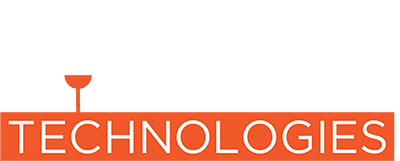Plastic Tooling for Metalcasting from Large Format 3D Printers
For those looking to use additive manufacturing as a means to make metal parts, there are four main paths to the end result:
- Direct Metal – systems that “grow” metal parts directly from powdered metal or welding wire
- Printed Sand Molds and Cores
- Printed Plastic Tooling
- Printed Investment Casting Waxes
Simple Solutions That Work! has featured several articles on the large format sand 3d printers; machines that can make resin bonded sand molds from a variety of sands and resins. As these machines grow in speed, accuracy, and size, they will be useful to a broader range of foundries. The manufacturers are continuing to qualify new materials, further enhancing the value of these systems for making challenging castings.
For many castings, however, the number of parts that needs to be made is greater than the economic cutoff for printed sand molds. Higher volume castings still frequently will require tooling to be commercially viable. Traditional
CNC cut patterns from wood, renboard, or metals can have fast turnaround, and can be used to make hundreds, if not thousands of casting from one set of patterns.
3D Printing a large plastic pattern is a rapidly developing alternative to CNC patterns. Matchplates, patterns, gates & runners, custom risers, and even multipart core boxes can be printed quickly and affordably out of durable plastics like nylon and ABS. In years past, the top options were typically high-end extrusion based systems from Stratasys, such as the Fortus 900mc ®.
[source: http://www.stratasys.com/solutions/additive-manufacturing/tooling/sand-casting]
With the expiration of several initial patents a few years ago, there has been an explosion of new 3D printer manufacturers. The majority of the press around the “open source” FDM printers has been around the “maker class” printers – typically hobbyist models that sell for under $2,000. New market entrants like Titan 3D Robotics have been making headways on the industrial side of things, though with less public fanfare. Titan’s Atlas 2.0 printer has already been installed in foundries, making patterns and tooling up to 30x30x40 inches.
[source: http://www.titan3drobotics .com/finding-new-partners-in-foundry-alliant-castings/]
Several other manufacturers are also pursuing the foundry tooling market, such as 3DP Platform. The key with any of these larger systems is to make sure that they come with a heated build plate, to get the best parts possible.
Just like sand printer manufacturers are expanding their utility by releasing new combinations of sands are resins, the plastic printer manufacturers are also continuously improving their plastic delivery mechanisms and the materials offerings. The recent trend of systems which can use plastic pellets instead of a filament has allowed for a massive drop in materials prices. Materials options have already expanded well past the early ABS stock. Fiber reinforced, flame proof, rubbery, translucent, higher temperature resistant – even wood like fibers have been release. Look for rapid development of new applications with the new feed stock over the next year. PLA (a naturally sourced polymer) has also been shown to be a viable and affordable material for applications like lost foam and investment casting “wax” applications.
With “lights out” 3D printing factories being installed in foundries in the coming year, the US market should continue to improve its competitive advantage. Large format 3D printers can bring you flexible, fast turn, affordable tooling options, and the ability to reprint tooling as needed in hours - right on the foundry floor.
Have an emerging technology you would like discussed?
Please email me at [email protected] and we will try to source the answers you are looking for.

Final metalcast part using 3D printed patterns
— Photo courtesy of Titan Robotics

3D printed ABS pattern mounted for sand casting
— Photo courtesy of Titan Robotics

